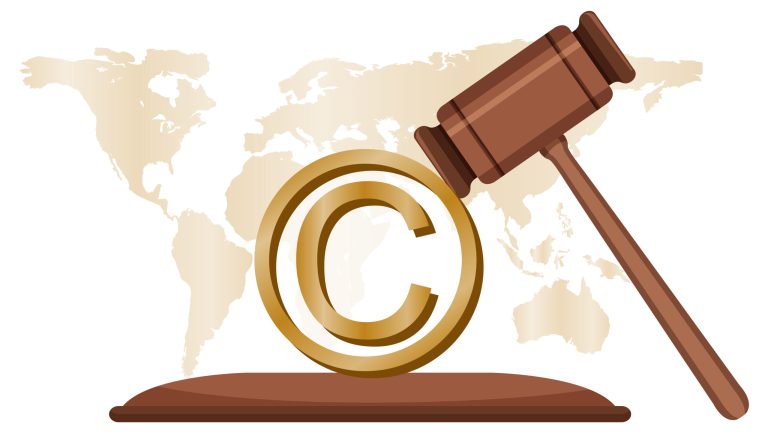
The Role of Medical Negligence in Cerebral Palsy Cases
Cerebral palsy lawsuits often center around the concept of medical negligence. This occurs when healthcare providers fail to meet the standard of care expected in the medical community, leading to harm. In cases of cerebral palsy, this could involve errors during childbirth, such as improper use of delivery tools or failure to monitor fetal distress. These mistakes can result in brain injuries, which may cause cerebral palsy. Families affected by such negligence can seek compensation through legal action to cover medical expenses and other related costs.
Key Legal Terms and Definitions
Understanding the legal jargon is crucial when navigating a cerebral palsy lawsuit. Terms like “plaintiff” and “defendant” are commonly used. The plaintiff is the person bringing the lawsuit, typically the child’s parents, while the defendant is the medical professional or institution accused of negligence. “Damages” refer to the compensation sought by the plaintiff. Familiarity with these terms can help families better comprehend the legal process and communicate effectively with their attorneys.
The Importance of Expert Testimony
Expert testimony plays a vital role in cerebral palsy lawsuits. Medical experts provide insights into whether the standard of care was breached and how this breach led to the child’s condition. Their opinions can significantly influence the outcome of a case, offering critical evidence that supports the plaintiff’s claims. These experts, often experienced doctors or specialists, help the court understand complex medical issues, making their contributions indispensable in establishing negligence and causation.
Statutes of Limitations: A Crucial Consideration
State-by-State Variations in Filing Deadlines
Filing a cerebral palsy lawsuit is a race against time, and the clock ticks differently depending on where you are. Each U.S. state has its own rules about how long you have to start a lawsuit. These time limits, known as statutes of limitations, are there to make sure cases are handled while evidence is still fresh. But they can vary a lot. For example, in Illinois, parents can file a birth injury lawsuit on behalf of their child until the child’s eighth birthday. In some states, you might have just a couple of years, while in others, the deadline can stretch further. Knowing these deadlines is vital. Missing them can mean losing the chance to seek justice and compensation for your child’s condition.
The Discovery Rule and Its Implications
The discovery rule can be a lifesaver in cerebral palsy cases. Normally, the statute of limitations starts ticking from the date the injury happened. But what if you didn’t know about the injury right away? The discovery rule addresses this by starting the clock when you discover, or should have discovered, the injury. This is especially important because cerebral palsy might not be diagnosed until months or even years after birth. However, this rule isn’t a free pass in every state. Some states still enforce a strict deadline, regardless of when the injury was discovered. It’s crucial to understand how your state handles these situations to ensure you don’t miss your window to file a lawsuit.
Consequences of Missing the Filing Deadline
Missing the filing deadline can have severe consequences. Once the statute of limitations passes, you typically cannot file a lawsuit, no matter how strong your case might be. This means losing the chance to hold medical professionals accountable and to secure financial support for your child’s needs. The legal system is strict about these deadlines to ensure fairness in handling evidence and testimonies. Delays can result in lost records and faded memories, which can weaken a case. Therefore, understanding and acting within these time limits is essential for any parent considering legal action for cerebral palsy related to medical negligence.
The Process of Filing a Cerebral Palsy Lawsuit
Initial Consultation and Case Evaluation
When a family suspects that their child’s cerebral palsy might be due to medical negligence, the first step is often an initial consultation with a legal professional. This meeting is crucial as it helps establish whether there is a viable case. During this session, the attorney will gather details about the child’s condition, the circumstances surrounding the birth, and any medical interventions that took place. This evaluation is essential to determine if parents of children born with cerebral palsy due to medical negligence can pursue a lawsuit to seek compensation for necessary treatments. A thorough review of medical records and expert opinions might be needed to assess the strength of the claim.
Gathering and Preserving Evidence
Once the decision to proceed with a lawsuit is made, the next phase involves gathering and preserving evidence. This process is fundamental to building a strong case. Lawyers will collect medical records, witness statements, and expert testimonies that can demonstrate how medical negligence contributed to the child’s condition. It’s vital to document everything meticulously, as this evidence will form the backbone of the legal argument. The aim is to establish a clear link between the medical professional’s actions and the resulting diagnosis of cerebral palsy.
Filing the Complaint and Legal Proceedings
After compiling the necessary evidence, the legal team will file a formal complaint against the responsible parties. This document, submitted to the court, outlines the allegations and the damages sought. Filing the complaint marks the official start of the legal proceedings, setting the stage for potential negotiations or a court trial. Throughout this process, the legal team will handle all procedural aspects, allowing the family to focus on their child’s needs. Pursuing a cerebral palsy lawsuit can be a lengthy journey, but it is often a necessary step for families seeking justice and financial support for their child’s ongoing care.
The Role of Legal Representation in Cerebral Palsy Cases
Choosing the Right Attorney for Your Case
Selecting the right attorney is a pivotal step when pursuing a cerebral palsy lawsuit. An attorney’s experience in medical malpractice and birth injury cases can significantly influence the outcome. Families should look for lawyers who have a proven track record in handling cerebral palsy cases specifically. The right attorney will not only have a deep understanding of the legal nuances but will also be compassionate and sensitive to the family’s situation. It’s important to feel comfortable and confident in the attorney’s ability to advocate effectively.
Understanding Contingency Fee Arrangements
Legal representation in cerebral palsy cases often operates on a contingency fee basis. This means that the attorney only gets paid if the case is successful, either through a settlement or a court verdict. This arrangement can be beneficial for families as it reduces the financial burden of upfront legal fees. It also aligns the attorney’s interests with those of the family, as the lawyer is motivated to secure the best possible outcome. Families should discuss and understand the specifics of the fee arrangement before proceeding.
The Benefits of Early Legal Intervention
Engaging legal counsel early in the process can be crucial for a cerebral palsy lawsuit. Early intervention allows attorneys to gather and preserve critical evidence, which can be essential for building a strong case. It also provides families with guidance and support from the outset, helping them navigate the complex legal landscape. Additionally, early legal involvement can expedite the process, potentially leading to a quicker resolution and access to compensation needed for the child’s care. Families are encouraged to seek legal advice as soon as they suspect medical negligence.
Potential Outcomes and Compensation in Cerebral Palsy Lawsuits
Types of Compensation Available
When families embark on the journey of a cerebral palsy lawsuit, they are often seeking financial relief to cover the extensive costs associated with their child’s care. This compensation can include medical expenses, such as surgeries, medications, and ongoing therapies like physical and occupational therapy. Additionally, families might be reimbursed for assistive devices, home modifications, and transportation needs. In some instances, compensation also accounts for lost wages if parents need to become full-time caregivers. The ultimate goal is to alleviate the financial burden and ensure that the child receives the best possible care.
The Likelihood of Settlements vs. Trials
Many cerebral palsy cases are resolved through settlements rather than going to trial. This approach tends to be less risky and more efficient, allowing families to avoid the uncertainty and emotional toll of a courtroom battle. Settlements can provide quicker access to funds, which is crucial for addressing immediate needs. However, the decision to settle or proceed to trial depends on the specifics of the case, including the strength of evidence and the willingness of the parties to negotiate.
Factors Influencing the Amount of Compensation
The amount of compensation awarded in a cerebral palsy lawsuit can vary widely based on several factors. The severity of the child’s condition and the extent of medical negligence play significant roles. Additionally, the costs of future care and the impact on the family’s quality of life are considered. Legal representation is also a critical factor, as experienced attorneys can effectively argue for higher compensation by presenting compelling evidence and expert testimony. Ultimately, each case is unique, and the compensation reflects the specific circumstances and needs of the affected family.
Common Challenges in Cerebral Palsy Lawsuits
Proving Medical Negligence and Causation
In cerebral palsy lawsuits, one of the toughest hurdles is establishing that medical negligence directly caused the condition. This often requires thorough investigation into medical records and detailed testimony from medical experts. These professionals must convincingly demonstrate that the healthcare provider deviated from standard practices, leading to the injury. It’s not just about showing that a mistake was made—it’s about proving that this error was directly responsible for the child’s cerebral palsy. This can be a complex and nuanced process, often requiring a deep dive into medical procedures and standards.
Dealing with Insurance Companies
Another significant challenge is negotiating with insurance companies. These entities are typically focused on minimizing payouts and will employ various strategies to protect their interests. Families often find themselves up against seasoned negotiators who are adept at finding ways to reduce the compensation. This can be frustrating and emotionally draining, especially when families are seeking funds to cover substantial medical expenses and future care needs. Having a skilled attorney can help level the playing field, ensuring that families receive a fair settlement.
Overcoming Statutory and Procedural Hurdles
Legal proceedings are fraught with procedural rules and statutory deadlines that must be strictly adhered to. Missing a filing deadline or failing to follow proper legal protocols can jeopardize a case. Each state has its own statutes of limitations, which dictate the time frame within which a lawsuit must be filed. Navigating these legal waters requires careful attention to detail and a thorough understanding of both state and federal laws. It’s crucial for families to engage with legal professionals who specialize in cerebral palsy cases to avoid these pitfalls and ensure that their case is presented effectively.
The Emotional and Financial Impact of Cerebral Palsy Lawsuits
Coping with the Stress of Legal Proceedings
Families dealing with cerebral palsy lawsuits often find themselves under immense stress. The legal process can be daunting and emotionally draining. Parents, already grappling with the challenges of caring for a child with cerebral palsy, must also navigate the complexities of a legal battle. This can lead to feelings of frustration and helplessness. It’s crucial for families to seek emotional support, whether through counseling or support groups, to manage the stress that accompanies these proceedings. Understanding that they are not alone in this journey can provide some solace.
Financial Planning for Long-Term Care
The financial burden of caring for a child with cerebral palsy can be overwhelming. Medical expenses, therapies, and adaptive equipment can quickly add up. When pursuing a lawsuit, families must consider the potential costs and benefits. A successful cerebral palsy lawsuit can provide essential financial relief, covering past and future medical expenses. However, families must also plan for the long-term care of their child, ensuring they have the resources needed for ongoing support and therapies. Consulting with financial advisors who specialize in special needs planning can be beneficial.
Support Resources for Affected Families
Navigating life with a child who has cerebral palsy requires access to a variety of resources. Families should tap into available support networks, which can include local community services, national organizations, and online forums. These resources offer valuable information on managing day-to-day challenges and provide a sense of community. Connecting with other families who have faced similar situations can be particularly empowering, offering both practical advice and emotional support. Whether through formal support groups or informal connections, these networks play a vital role in helping families cope with the challenges they face.
Resources for Cerebral Palsy Claims




